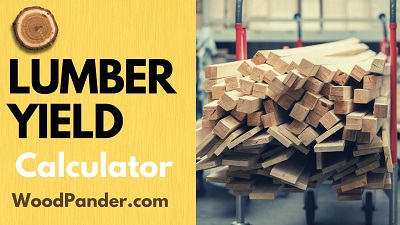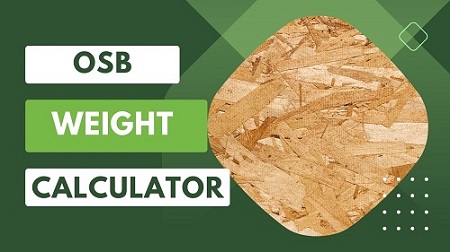Our Lumber Weight Calculator is a great tool for builders, contractors, and DIY enthusiasts who need to calculate the weight of lumber for their projects.
Whether you’re working on a construction project, or just need to know how much a piece of wood weighs, this tool is the perfect solution.
A Lumber Weight Calculator helps estimate the weight of wood based on its dimensions and type, aiding in transportation and construction planning.
| Information Needed | Description |
|---|---|
| Dimensions | The length, width, and thickness of the lumber in inches. |
| Density | The density of the wood species, typically measured in grams per cubic centimeter. |
| Moisture Content | The moisture content of the lumber, expressed as a percentage. |
| Weight | The weight of the lumber, calculated using the inputted dimensions, density, and moisture content. |
| Load Capacity | The maximum load the lumber can safely support, determined by the weight of the lumber and the structure it’s being used in. |
| Strength | The strength of the lumber, determined by the weight and density of the wood species. |
One of our articles –Lumber Pricing Calculator.
What is a Lumber Weight Calculator?
A lumber weight calculator is a tool used to calculate the weight of different types of lumber.
It is a valuable resource for anyone who works with lumber, including architects, contractors, carpenters, and woodworkers.
The green lumber weight calculator considers various factors such as wood species, density, moisture content, and dimensions to determine the weight of the lumber.
Lumber Weight Chart
| Lumber Type | Weight per Board Foot (lbs) | Weight per Cubic Foot (lbs) |
|---|---|---|
| Softwood (e.g., Pine) | 2.5 – 3.5 | 25 – 35 |
| Hardwood (e.g., Oak) | 3.0 – 4.5 | 30 – 45 |
| Cedar | 2.5 – 3.0 | 25 – 30 |
| Redwood | 2.5 – 3.0 | 25 – 30 |
| Douglas Fir | 2.5 – 3.5 | 25 – 35 |
| Maple | 3.0 – 4.0 | 30 – 40 |
| Cherry | 3.0 – 3.5 | 30 – 35 |
| Walnut | 3.5 – 4.5 | 35 – 45 |
Factors that Affect Lumber Weight
Several factors affect lumber weight, including:
Wood Species
Different wood species have different densities, which affects the weight of the lumber. For instance, a cubic foot of cedar weighs less than a cubic foot of oak.
Moisture Content
Moisture content is another critical factor that affects lumber weight. Green lumber, which is freshly cut, is heavier than seasoned or kiln-dried lumber.
Moisture content is measured as a percentage of the lumber’s weight, and it can significantly affect the weight of the lumber.
Dimensions
The dimensions of the lumber also affect the weight. A thick and wide board will weigh more than a thin and narrow one.
Treatment
Treated lumber, which has been chemically treated to resist decay and insects, is heavier than untreated lumber.
How to Calculate Lumber Weight
Calculating lumber weight can be a complex process, especially when dealing with large quantities of lumber.
However, with the help of a dimensional lumber weight calculator, the process becomes more straightforward. Here’s how to calculate lumber weight using a lumber weight calculator:
Step 1: Measure the Dimensions of the Lumber
Measure the length, width, and thickness of the lumber in inches. For instance, a board with a length of 8 feet, a width of 6 inches, and a thickness of 2 inches would be measured as follows:
Length = 8 feet x 12 inches/foot = 96 inches
Width = 6 inches
Thickness = 2 inches
Step 2: Determine the Density of the Wood Species
Consult a wood density chart to determine the density of the wood species you are using. For instance, the density of oak is approximately 0.75 grams per cubic centimeter.
Step 3: Determine the Moisture Content of the Lumber
Determine the moisture content of the lumber. The moisture content can be measured using a moisture meter or by weighing the lumber before and after drying it. For instance, if the moisture content of the lumber is 12%, it means that 12% of the weight of the lumber is water.
Step 4: Calculate the Weight of the Lumber
Weight: lbs
To calculate the weight of the lumber, we need to use a lumber weight calculator. The calculator requires us to enter the dimensions, density, and moisture content of the lumber. Here’s an example of how to use a lumber weight calculator to calculate the weight of a board:
Let’s say we have a board with a length of 8 feet, a width of 6 inches, and a thickness of 2 inches made of oak with a moisture content of 12%. We can use a lumber weight calculator to determine the weight of the board as follows:
- Enter the length, width, and thickness of the board in inches. In this case, we have:Length = 96 inches Width = 6 inches Thickness = 2 inches
- Enter the density of the wood species. For oak, the density is approximately 0.75 grams per cubic centimeter.
- Enter the moisture content of the lumber. In this case, the moisture content is 12%.
- Click on the “Calculate” button to get the weight of the board.
Using a lumber weight calculator, the weight of the board would be approximately 23.92 pounds.
Step 5: Use the Weight to Determine Load Capacity and Strength
Knowing the weight of the lumber is essential for determining the load capacity and the strength of the structure you are building.
For instance, if you are building a deck, you need to know the weight of the lumber to determine the load capacity of the deck. If the weight of the deck exceeds the load capacity, the deck may collapse, leading to injuries or property damage.
By calculating the weight of the lumber, you can also determine the amount of lumber needed for a particular project. This helps you to avoid wastage and minimize costs.
Step 6: Factors to Consider When Using a Lumber Weight Calculator
When using a lumber weight calculator, it is essential to consider the following factors:
- Moisture content: Ensure that you measure the moisture content accurately. The moisture content can significantly affect the weight of the lumber.
- Species and grade: Different wood species and grades have different densities, which affect the weight of the lumber.
- Volume: The volume of the lumber affects its weight. A thicker and wider board will weigh more than a thinner and narrower one.
- Treatment: Treated lumber, which has been chemically treated to resist decay and insects, is heavier than untreated lumber.
See Also Calculate Timber Log.

Related Questions-Lumber Weight Calculator
How Much Does a 6x6x12 Weigh?
A 6x6x12 wooden beam, often used in construction, typically weighs around 216 pounds. It's sturdy and suitable for supporting heavy loads.
How Much Does a 2x12x16 Weigh?
A 2x12x16 board, commonly used in framing, weighs approximately 80 pounds. It's great for long spans and structural support
How Much Does a 2x6x10 Weigh?
A 2x6x10 board weighs about 20 pounds and is often used for wall framing and other lighter applications.
How Much Does a 2x8x10 Weigh?
A 2x8x10 board weighs around 27 pounds and is versatile for various construction projects.
How Much Does a 2x10x12 Weigh?
A 2x10x12 board weighs roughly 40 pounds, making it suitable for heavier structural needs.
How Much Does a 2x4x10 Weigh?
A 2x4x10 board, often used in framing, typically weighs about 13 pounds.
How Much Does a 1x6x8 Weigh?
A 1x6x8 board is relatively lightweight at approximately 8 pounds, suitable for interior finish work.
How Much Does a 4x4x10 Weigh?
A 4x4x10 post, commonly used for support and outdoor structures, typically weighs about 48 pounds.
How Much Does a 8x8x12 Weigh?
An 8x8x12 timber beam, used for substantial structural support, generally weighs around 384 pounds due to its larger size and weight-bearing capacity.
What is the formula for calculating the weight of lumber?
The formula for calculating the weight of lumber is weight = volume x density.
How is Wood Calculated Using a Formula?
The formula weight is the sum of the atomic weights of all the atoms in a chemical formula. Wood can be calculated using a formula by determining the volume and density of the wood.
Source:
https://www.ndt.net/article/v06n03/schajer/schajer.htm
https://www.degruyter.com/document/doi/10.1515/hfsg.1997.51.5.467/html








